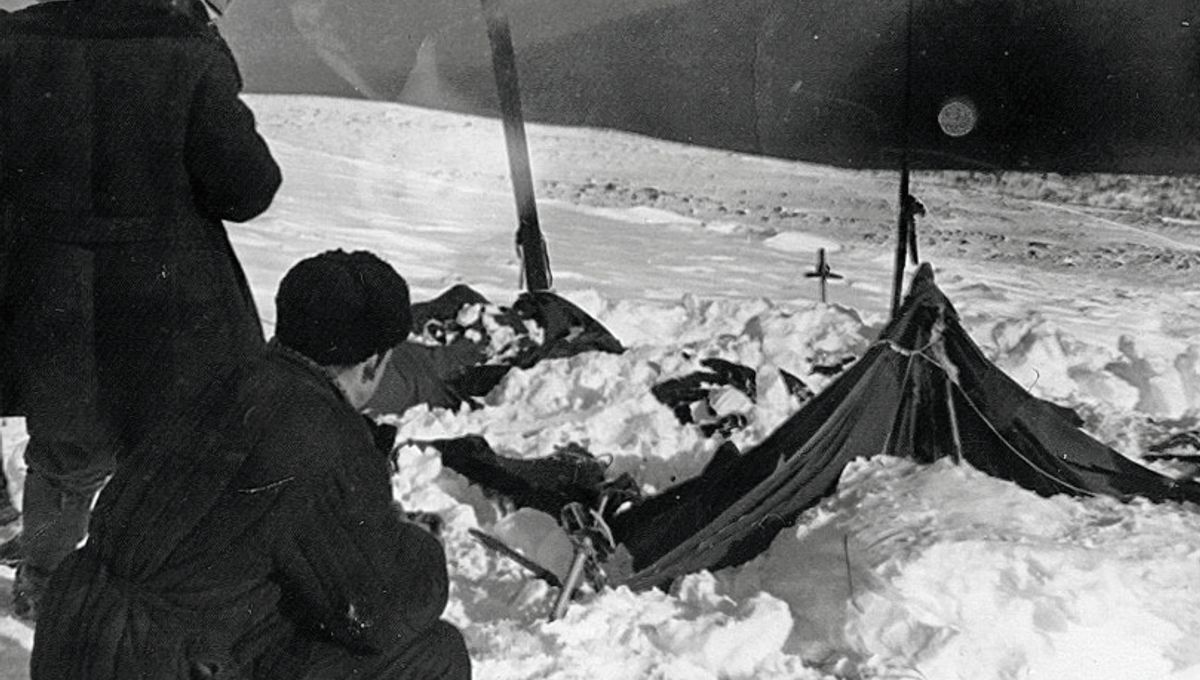
In the latest series of True Detective, True Detective: Night Country, a team of researchers go missing in the Alaskan Arctic and are later found frozen together in a horrifying human “corpsicle”. The series contains spooky parallels to real life, and sparks some interesting questions around human cryogenics.
In an interview with Vanity Fair, director and writer Issa López confessed to drawing inspiration from historical events in the new series. These include the mysteries of the Mary Celeste and the Dyatlov Pass incident.
What was the Dyatlov Pass incident?
On January 27, 1959, nine experienced hikers died on the slopes of Kholat Syakhl Mountain (which translates to “Death Mountain” in the local Indigenous Mansi language). The team, from the Ural Polytechnic Institute in Russia, led by 23-year-old Igor Dyatlov, embarked on a 14-day expedition in the northern Ural Mountains, attempting to reach Gora Oterten Mountain. However, they never made it to their destination, all perishing on the freezing slopes.
A month later, rescuers searching for the hikers discovered their tent, cut open from the inside with most of their belongings still inside. Footprints in the snow led away from the tent and then disappeared, and indicated that they were barefoot, wearing only socks, or a single boot.
The next day, February 27, the first two bodies were recovered near the remnants of a fire. They were barefoot, wearing only underwear, and had both suffered burns. One had bitten off his own knuckle.
Three more bodies were found scattered between the fire and the tent, frozen in poses implying that they were trying to return to camp. The others were discovered almost three months later in a ravine. Two had their eyes missing, one had no eyebrows, and one had had their tongue ripped out.
Soviet authorities at the time established that three of the hikers died due to physical trauma and the other six of hypothermia.
Has the Dyatlov Pass incident been solved?
The incident has since become infamous, and in the intervening years several explanations have been put forward, ranging from avalanches to aliens, yetis, and secret military experiments – and yet the mystery of the Dyatlov Pass incident endures to this day. Why did these very experienced hikers flee their tent so ill-equipped to survive?
“An avalanche doesn’t explain a lot of the details I think,” López told Vanity Fair. “Even if it did, I prefer the strange, incomplete answer. I think there is a fascination with puzzles that are still missing a couple of pieces, and that obsess us, and make us angry, and make us not stop thinking about them.”
While we may never know what truly happened, we can shed some light on the whole, horrific “corpsicle” situation, and answer the question: Can humans survive being frozen like a popsicle?
Can humans survive being frozen?
“The short answer is no,” Professor Gary Bryant, Associate Dean (Physics) at RMIT University, told IFLScience.
Despite the stories you might have heard about people being frozen like a “piece of meat out of a deep freeze” and living to tell the tale, it is simply “not possible, and very probably never will be,” Bryant explained.
The human body – normally maintained at 37°C (98.6°F) – really can’t cope with much temperature change at all. In fact, hypothermia begins to occur if the body temperature drops below 35°C (95°F).
Although the body has its ways of keeping us alive at very low temperatures (by slowing its metabolic rate), it can’t survive actually being frozen – and it’s all because of ice. Humans cannot survive having any ice in our bodies. And seeing as ice formation and freezing go hand in hand, it is quite the roadblock to surviving being frozen.
“By the time the internal temperature gets to below 0°C [32°F], the cold itself will have already killed many cells and organs, but once ice forms, it is basically going to be lethal to most cells, and therefore to the human,” added Bryant.
Unfortunately for anyone wanting to create a human popsicle, the adult human body is 60 percent water. Water is found in cells throughout the body: the brain and heart are nearly three-quarters water, the lungs are 83 percent water, and even our bones contain some. At extreme low temperatures, the water in these cells can freeze. As the water freezes, it expands, which can cause the cells to rupture. Lethal to both cell and human.
We’re sorry True Detective fans, but it seems like no one is getting out of the grotesque “corpsicle” alive – aside from maybe a few tardigrades and possibly the odd worm.
Source Link: Dyatlov Pass Incident: The Real-Life Mystery That Inspired The New Season Of True Detective